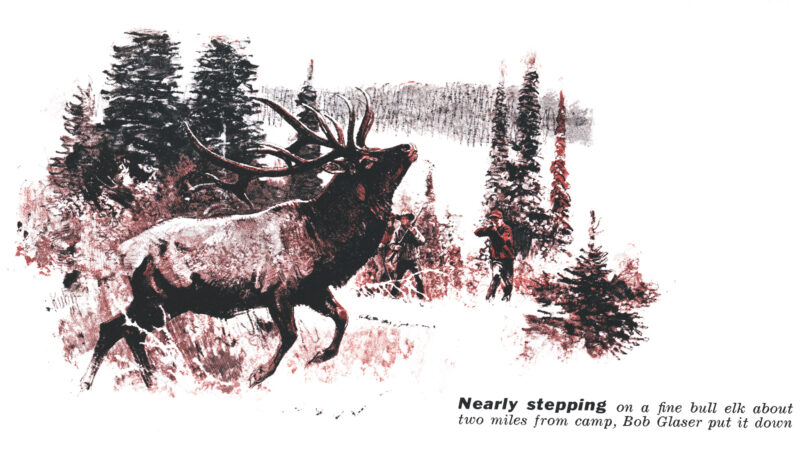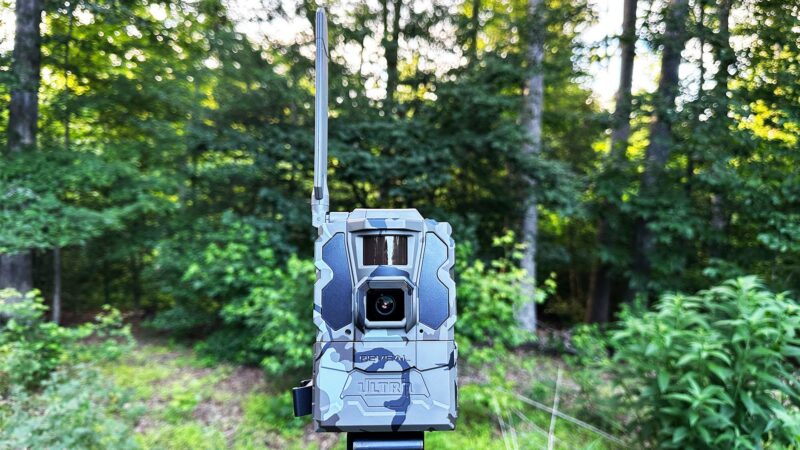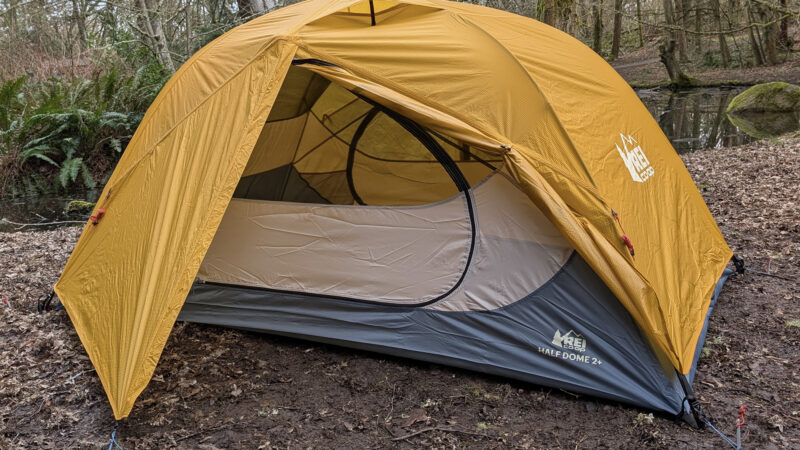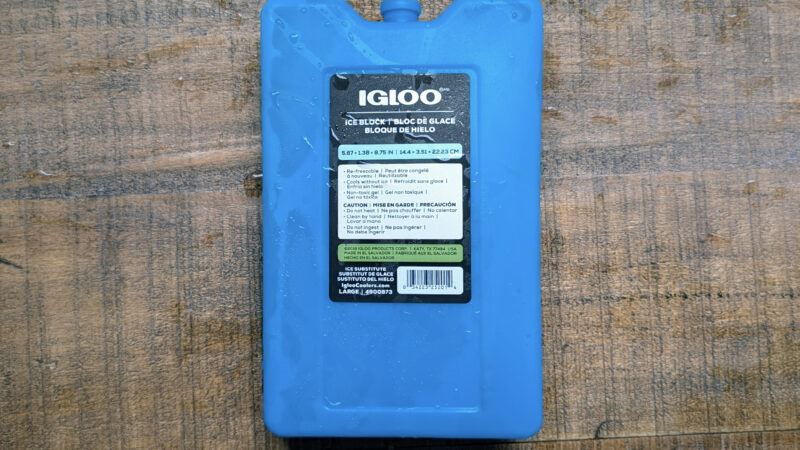How to Use Trail Cameras for Turkey Hunting
We may earn revenue from the products available on this page and participate in affiliate programs. Learn More ›
“We definitely heard gobbles somewhere north of Camera 5.”
That was the extent of my knowledge about turkey locations as I arrived at an Alabama hunting camp earlier this month. I had landed late and driven a couple hours. It was now well after dark, too late to roost birds and formulate a plan for the morning. But the owner of the 4,000 acres of hardwood ridges, fescue hayfields, and cut-over pine plantations had a half dozen Moultrie trail cameras spread out in various places on the farm, and they proved a surprisingly useful tool to plan our hunt.
My buddy Will and I headed out earlier than if we had a clear destination, but wanted to be within earshot of Camera 5 when the first birds fired up.
The only gobble we heard was way south of Camera 5 — probably not the one my buddies had heard on the evening roost, and Will and I burned to get set up for fly-down. It turned into one of those magical mornings when everything worked, and I called a lone longbeard through thick brush into range of Will’s Stoeger shotgun just as the sun peeked over a high ridge on the Georgia line.
As we hunted through the rest of the week, trail cameras became an increasingly important part of our strategy. Depending on how you turkey hunt, they can be a critical tool for you to. Here’s how to use trail cameras for turkey hunting. —A.M.
Tips for Turkey Hunting with Trail Cameras
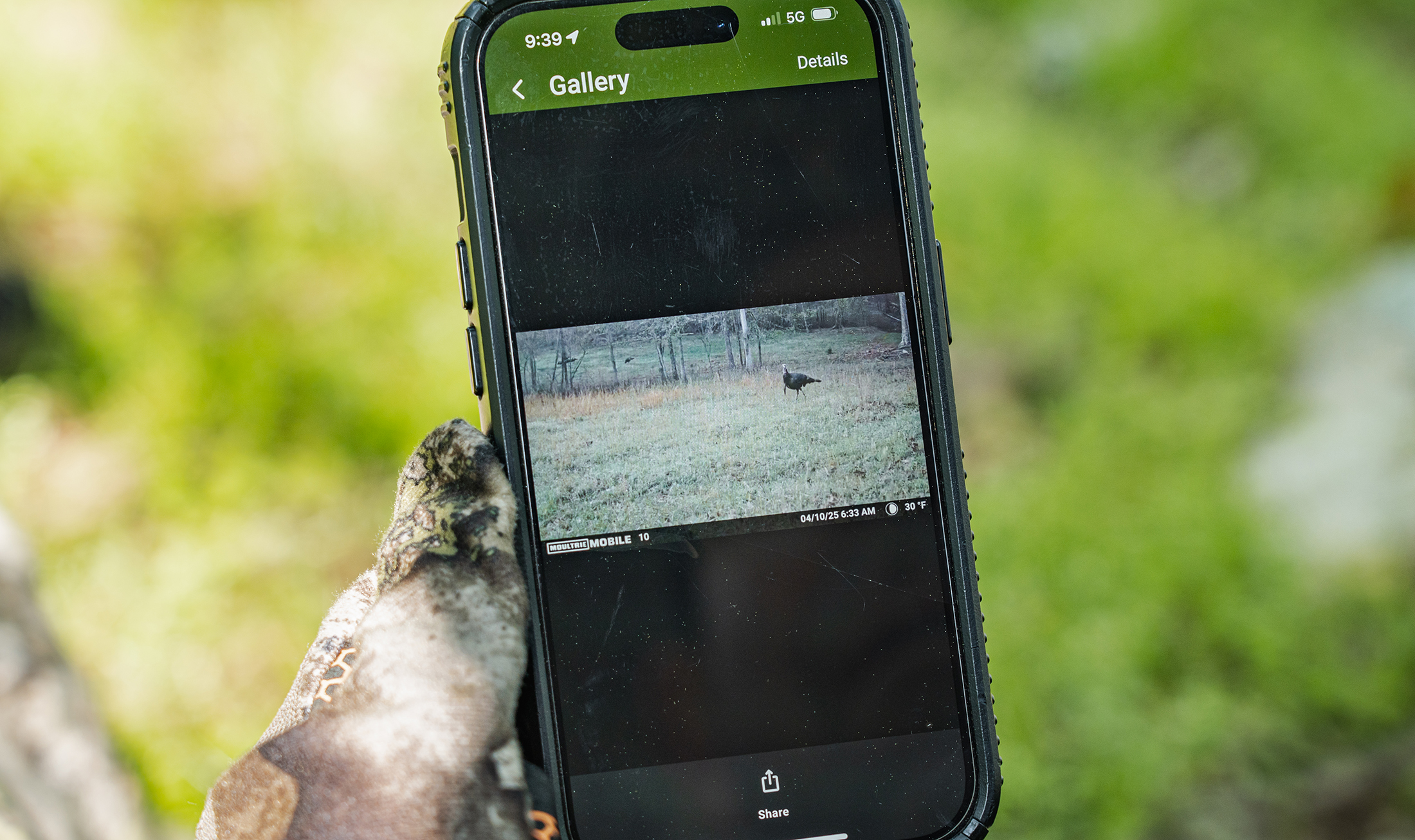
Use Cameras to Roost Toms
The first step in establishing a useful trail camera strategy for turkey hunting is to position your cameras in the right spots. It’s a good idea to start with likely roosting areas since turkeys will frequent those locations at least twice per day.
One of our cameras was set up on a firebreak below a ridgeline stand of old-growth longleaf pines. It was an obvious roosting location, but we only hunted it on mornings after it registered late-afternoon footage of birds. It’s an example of using cameras to focus your activity on high-percentage opportunities. —A.M.
Read Next: The Best Cellular Trail Cameras, Tested and Reviewed
Locate Strut Zones
Another key camera location is potential strut zones. These are the areas that toms will head to mid-morning in order to strut, gobble, and attract hens. Likely strut zones are green fields, food plots in the woods, and logging roads in open timber. The best zones usually can’t be seen from a road, and that’s where cameras come into play. Look for tom tracks and wing drag marks before committing a camera to a potential strut zone. —A.R.
Understand Flock Dynamics
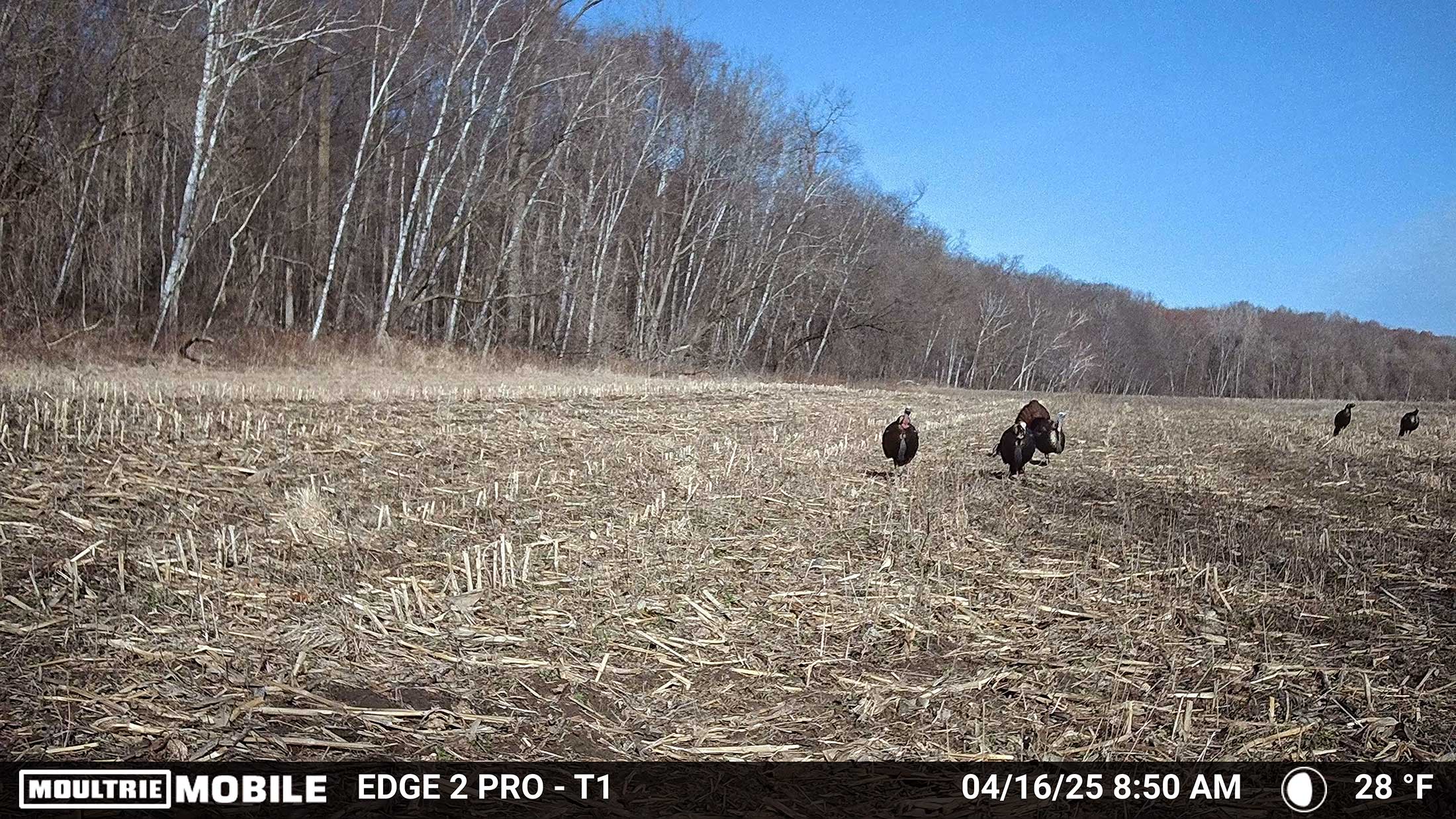
It’s important to know where toms like to go, but you should also figure out how the bird you’re hunting is interacting with other turkeys. So when you start getting trail cam pictures of turkeys, pay close attention flock dynamics. Does a boss tom always show up on camera strutting with a group of hens? Or is there a subdominant tom that comes slinking through only after a gang of jakes passes by? Is there a pair of buddy toms that always arrive after a hen walks by? All of these scenarios require slightly different hunting strategies, so plan accordingly. —A.R.
Know Where Turkeys Aren’t
Cameras can confirm the lack of activity. Some of the most useful intelligence we gleaned from cameras wasn’t the presence of game, but rather the absence of it. That’s valuable knowledge — knowing where not to hunt — and helped us focus on the farm’s most productive areas. —A.M.
Turkey Photos Only
Because you’re likely setting trail cameras lower to the ground for turkeys (since they’re shorter than deer) they’re going to be triggered more often by squirrels, raccoons, and all sorts of other ground-dwelling critters. But you don’t need to scroll through hundreds of non-turkey images. In the Moultrie Mobile App you can set your cameras to transmit turkey photos only. The app’s AI can tell the difference between a turkey and a squirrel or deer.
This saves time when you’re running a lot of cameras and it also saves battery life (transmitting photos takes a lot of juice). —A.R.
Take Tom Inventory
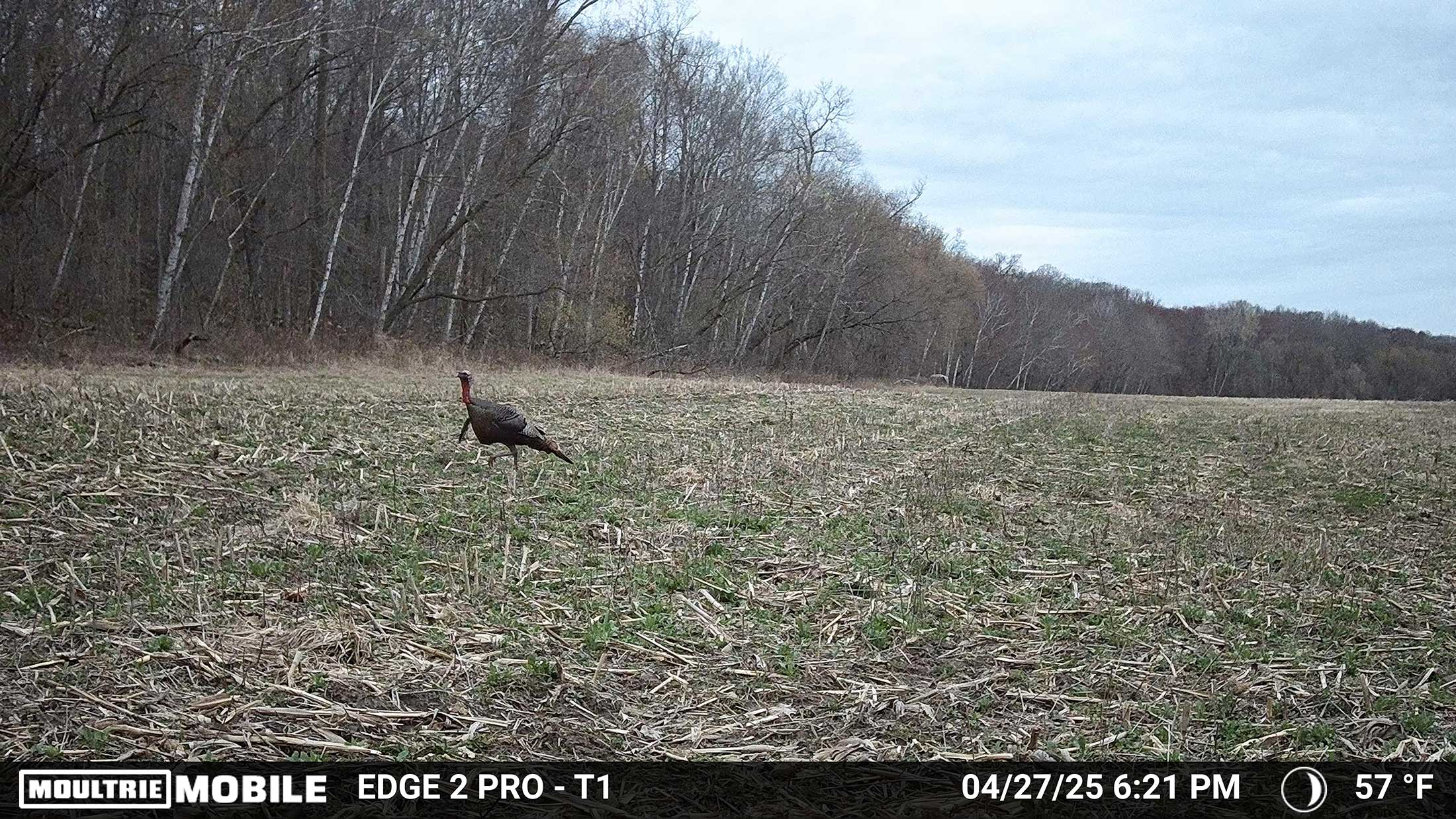
Trail cameras can also be useful management tools. Running a handful of cameras on a property will give you a good idea of how many toms, jakes, and hens are in the area. Year to year, this can help you decide how many toms to harvest (or not harvest) from a piece of ground.
As turkey populations continue to struggle across much of the country, all hunters should consider themselves turkey wildlife managers. —A.R.
Watch the Weather
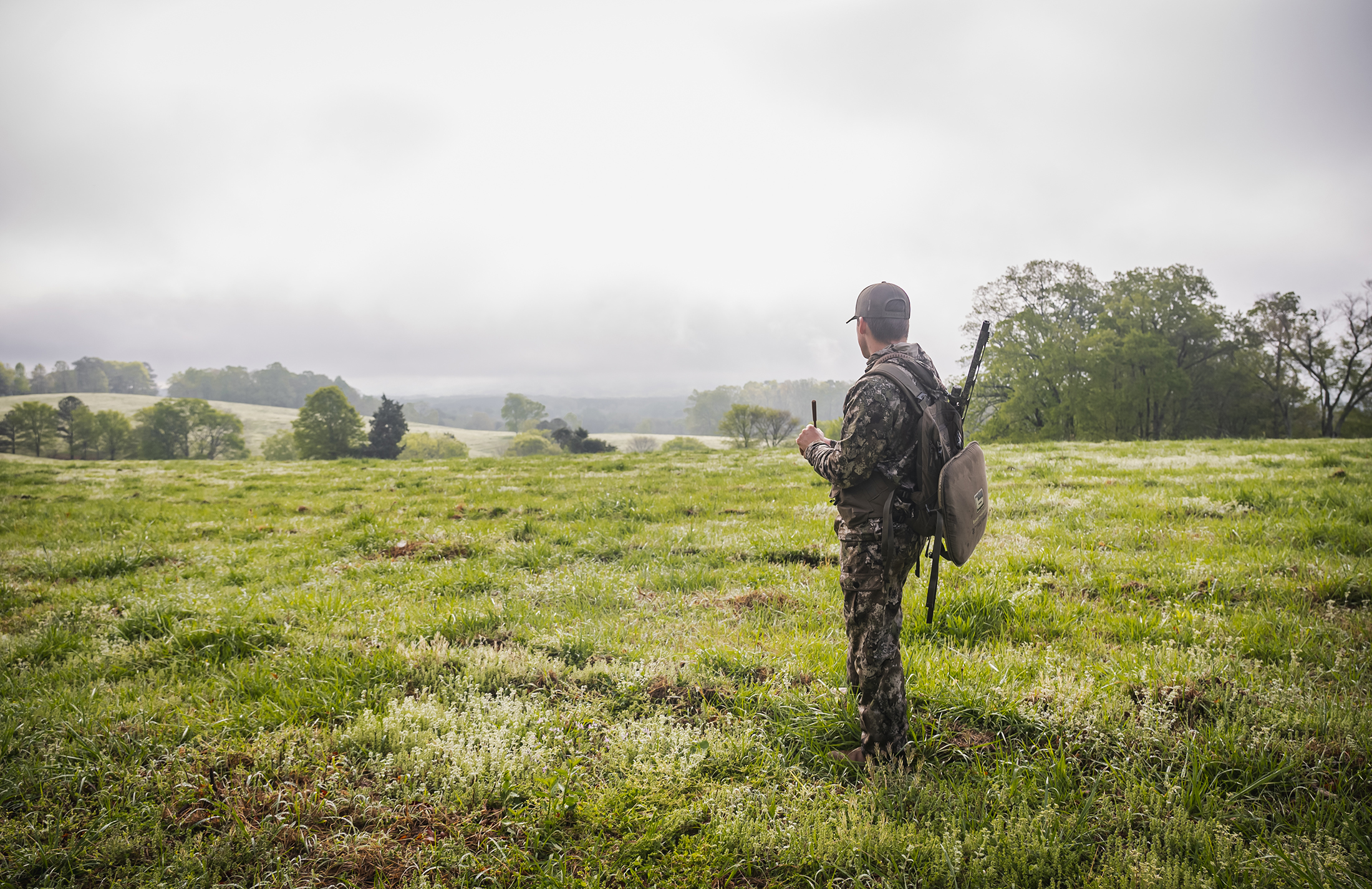
The Southeast has been rocked by severe storms this spring, and footage from the half-dozen Moultrie cameras on the Alabama farm let us see how turkeys responded to various weather conditions. A camera on the west side of a field had zero activity on calm, storm-free days. But it became full of turkey activity on days with afternoon thunderstorms, presumably because a block of timber shielded the field edge from westerly winds and rain. One of our group hunted it on a rainy afternoon — traditionally a horrible time to bag a bird — and killed a 3-year-old tom. —A.M.
Don’t Become Overly Reliant on Your Cameras
Cameras aren’t magic. Yes, they can supply critical intel, but they can also mislead or show only partial information. Even when turkeys appear on footage, you can’t know which direction they’re headed or what they do when they’re out of frame. And, cameras can easily miss capturing turkeys that are just out of range. So just because you’re not getting a ton of photos doesn’t mean that toms aren’t around. Rely on turkey hunting skill and woodsmanship over tech. —A.M.
Cell Cam Ethics
I went into this hunt with a belief that transmitting trail cams stress the limits of fair chase during a turkey hunt. If I can watch my camera’s feed and wait for an animal to show up, then immediately go kill it, how is that any different from using a drone to hunt? But in our case we didn’t use live-time feeds to hunt turkeys. Instead, we used the cameras’ photo rolls to learn daily patterns. That’s a traditional scouting technique. —A.M.
Read Next: Is Hunting with Cellular Trail Cameras Fair Chase or Cheating?
Back in the Hunt
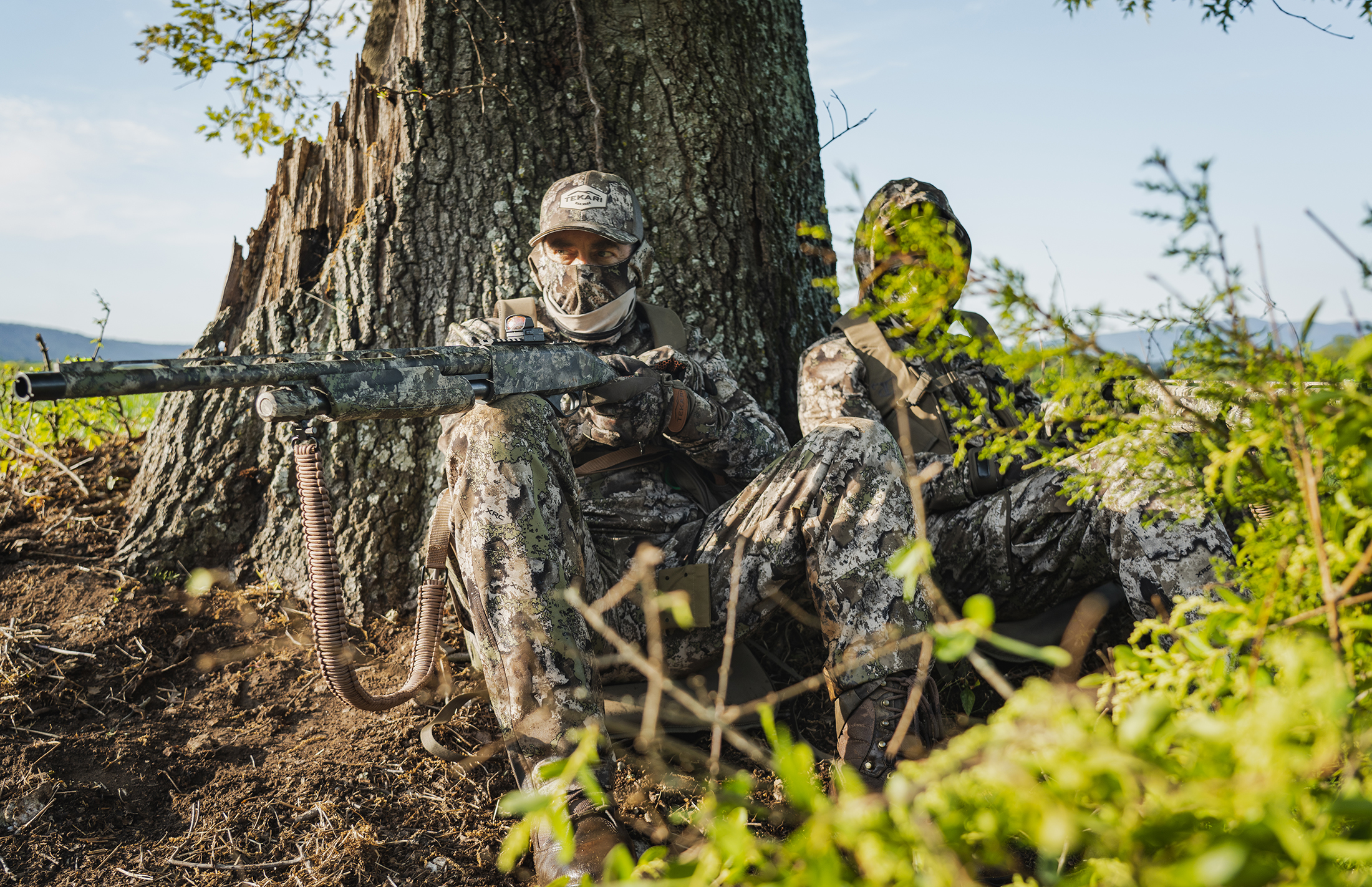
The rest of that day back in Alabama was spent prospecting this unfamiliar farm, with predictable results. We bumped birds. We had close calls with roaming gobblers. During an afternoon lull, our photographer, Jake, pulled up the Moultrie app with a shared gallery of the farm’s cameras. He scrolled through images of a camera set up on a firebreak in a patch of dense timber.
“Looks like all week a gobbler has been on that camera between 2 and 4 p.m. Makes sense. It’s on the northeast side of that ridge, so it would be cool and shady in the afternoon. And look,” he noted a small creek on the app’s digital map. “There’s water nearby and that firebreak leads down to that field.”
We had seen strutters in the late morning in that field. It all added up to the best prospect we had, and since neither Will, Jake, nor I wanted to go back to camp for lunch, we headed toward Camera 7.
I’d love to tell you it worked out as swimmingly as our daybreak hunt. Instead, we were careless during our walk-in and busted a gobbler about 100 yards from the camera location. Was it the same one that had been photographed by the Edge 2 Pro camera Probably. But now it was spooked and entirely uncallable.
That night back at camp, we traded notes with our other companions, and then checked camera footage to either confirm turkey sightings or to dismiss hunches. We could even see when our dejected party passed within triggering range of Camera 7.
One camera, overlooking a winter wheat field, showed frequent daybreak activity. A group of three to five gobblers was showing up consistently. It was hard to tell if these were 3-year-old longbeards, because they were always photographed going away at full strut. But their full fans confirmed they weren’t jakes, which was good enough for us.
The next morning we set up at the base of a large oak tree in the middle of that field, about 30 yards from the timbered edge. It wasn’t ideal since there was no obscuring brush around the oak’s trunk, but it allowed us great visibility of the entire field and woodland border. We hastily made a brush blind and three of us tucked into the gnarled base of this giant tree, congratulating ourselves when we heard daybreak gobbles.
Thirty minutes later three strutters entered the field just as the sun started baking off the heavy dew. For another 20 minutes they never came out of strut, but they could tell something wasn’t quite right about our tree, and started getting twitchy. Finally, as two magnum gobblers entered the field, the three 2-year-olds worked their way toward us. Together, these were likely the five toms we had seen on the cameras.

My buddy Benny is, like me, a southpaw, and we were both set up on the tree in the expectation that birds would approach from the right, making a fairly easy shot for a left-hander. But this trio was coming from the left, nervous about our presence, and both Benny and I were badly out of position, frustrating our plans to double if we got the chance. We’d have to scooch our bodies to shoot, and as the birds entered the woods and walked toward us I knew that it would have to be a fast shot before the gobblers busted us.
Unfortunately for Benny, I had the best shot, and moved my gun barrel slightly as I twisted my trunk. When the red dot of the sight met the bird’s dome, I fired. The other two toms didn’t wait for Benny. They were off into the woods before my bird started flopping.
Beyond the exhilaration of taking a mature Eastern gobbler in handsome new country, the experience was an education in using trail cameras as an essential scouting and decision-making tool.
The post How to Use Trail Cameras for Turkey Hunting appeared first on Outdoor Life.
Source: https://www.outdoorlife.com/hunting/trail-cameras-turkey-hunting/



